Makar Sankranti :-
Makar Sankranti is an Indian festival celebrated in almost all parts of India and Nepal in lots of cultural forms. It is a harvest festival.
Makar Sankranti marks the transition of the Sun into the zodiac sign of Makara (Capricorn) on its celestial path. The day is also believed to mark the arrival of spring in India and is a traditional event. Makara Sankranthi is a solar event making one of the few Indian festivals which fall on the same date in the Gregorian calendar every year: 14 January, with some exceptions when the festival is celebrated on 15 January. Primarily a harvest and thanksgiving festival in India, each state and region has it’s own way of celebrating Makar Sankranti.
SIGNIFICANCE OF MAKAR SANKRANTI :-
The festival of Makar Sankranti is associated with much cultural significance. The Puranas say that on this day Sun visits the house of his son Shani, who is the swami of Makar Rashi. This day symbolizes the healthy relationship of father & son. It is the son who has the responsibility to carry forward his fathers dream and the continuity of the family.
It was on this day when Lord Vishnu ended the ever increasing terror of the Asuras by finishing them off and burying their heads under the Mandara Parvata (Mountain). So this occasion also represents the end of negativities and beginning of an era of righteous living.
Regional Names :-
Since India is mainly a land of agrarian society, the festival of Pongal is observed in different regions, under different names with different rituals in different parts of India.
There are many harvest festivals celebrated here. This festival is celebrated all over India on the same day, but has different names in each region. However, being a harvest festival, bonfires and feasts are the main thing common to all the celebrations of Pongal festival. Discussed here are the various names of Pongal prevalent in India and their unique way of celebration.
Other Names of Makar Sankranti :-
Pongal
In the south, people have the festival of Pongal, which is celebrated over four days. The newly harvested rice is cooked and this preparation goes by the name Pongal.
In the south, people have the festival of Pongal, which is celebrated over four days. The newly harvested rice is cooked and this preparation goes by the name Pongal.
Makar Sankranti
In the North Indian states of India, people celebrate this day as Makar Sankranti. The most exciting thing about this festival is the kite flying. People believe that the direction of the wind changes on that day, and so they all come out into the streets to fly colorful kites and capture as many as possible.
In the North Indian states of India, people celebrate this day as Makar Sankranti. The most exciting thing about this festival is the kite flying. People believe that the direction of the wind changes on that day, and so they all come out into the streets to fly colorful kites and capture as many as possible.
Kanumu
On Kaanum Pongal, elaborate powdered chalk designs of the sun god, Surya are drawn. As soon as the auspicious month of Thai is underway, Surya is worshiped.
On Kaanum Pongal, elaborate powdered chalk designs of the sun god, Surya are drawn. As soon as the auspicious month of Thai is underway, Surya is worshiped.
Lohri
In Punjab, people celebrate Lohri in January on what they believe is the coldest day of the year. With the cold winds blowing they celebrate by dancing the bhangra around a fire, which is fed with sugarcane, rice and sesame seeds. People sing folk songs that tell of a good harvest, which is a blessing from the gods.
In Punjab, people celebrate Lohri in January on what they believe is the coldest day of the year. With the cold winds blowing they celebrate by dancing the bhangra around a fire, which is fed with sugarcane, rice and sesame seeds. People sing folk songs that tell of a good harvest, which is a blessing from the gods.
Bihu / Bohaggiyo Bhishu
This is the greatest festival of the Assamese people, who observe three Bihus. The three Bihus, constitute a festival complex and are celebrated at various stages of the cultivation of paddy, the principal crop of Assam.
This is the greatest festival of the Assamese people, who observe three Bihus. The three Bihus, constitute a festival complex and are celebrated at various stages of the cultivation of paddy, the principal crop of Assam.
Bhogi
The first day is Bhogi and is in honor of Indra the god of rain. There are many legends told about this day. The day begins with a til (sesame) oil bath and in the evening there is a bonfire in which all the rubbish in the house is burnt.
The first day is Bhogi and is in honor of Indra the god of rain. There are many legends told about this day. The day begins with a til (sesame) oil bath and in the evening there is a bonfire in which all the rubbish in the house is burnt.
Thai Pongal
This is a harvest festival – the Tamil equivalent of Thanksgiving. It is held to honor the Sun, for a bountiful harvest. Families gather to rejoice and share their joy and their harvests with others.
This is a harvest festival – the Tamil equivalent of Thanksgiving. It is held to honor the Sun, for a bountiful harvest. Families gather to rejoice and share their joy and their harvests with others.
Poki festival
The first day is the Poki festival during which old things are removed and discarded. Since rain plays a very important part in our lives, naturally rain is revered and the first day’s celebration is appropriately called Poki festival.
Hadaga Festival
The Hadaga festival in Maharashtra is to pray for a good monsoon and a good harvest. As Indra is the god of rain, people sing songs to Indra and pray for rain. Pictures of the elephant which is Indra’s vehicle are drawn everywhere to invite the God.
==============================
Call it Makar Sankranti, Lohri, Maghi, Bihu, Uttarayan, or Pongal – the harvest festival is around the corner and is celebrated with utmost zeal and enthusiasm in every nook and corner of India. Makar Sankranti marks the transition of the Sun into the zodiacal sign of Makar (cancer). This festival symbolizes the end of the winter season (long foggy nights) and marks the beginning of sunny days. Makar Sankranti falls either on January 14 or January 15. This year it is on 15th of January. Nowadays one of the major attractions of this festival is kite flying. On this day, all the members of family irrespective of the age, bond together and enjoy the reaping festival by flying kites. As India is a diverse country, each state and region celebrate Makar Sankranti in its own way. In this blog, we will tell you everything that you need to know about the harvest festival of India.
Significance of Makar Sankranti
Celebrated across the nation, this day holds religious and cultural significance. As per the Puranas, Lord Sun met his son Shani (swami of Makar Rashi) for the first time on this day. Another legend that is associated with this festival is, Lord Krishna demolished the terror of Ashuras by burying their heads under the Mandara Parvata (Mountain). This auspicious day symbolizes the end of evil power and the beginning of a peaceful era.
Celebrated across the nation, this day holds religious and cultural significance. As per the Puranas, Lord Sun met his son Shani (swami of Makar Rashi) for the first time on this day. Another legend that is associated with this festival is, Lord Krishna demolished the terror of Ashuras by burying their heads under the Mandara Parvata (Mountain). This auspicious day symbolizes the end of evil power and the beginning of a peaceful era.
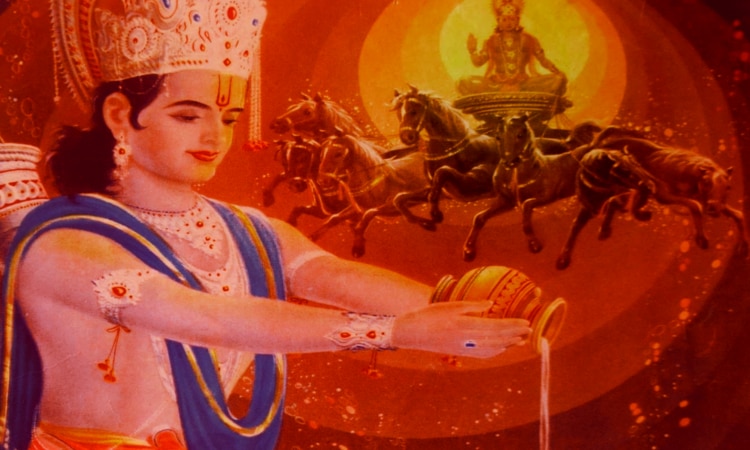
Regional Names
Amidst the fun and varying rituals, Makar Sankranti is observed in almost all the parts of India by different regional names. One of the most popular and a common ritual of this festival is - bonfires and delicacies of jaggery and sesame seeds. Let us delve deeper to know its unique ways of celebration in different regions of India.
Amidst the fun and varying rituals, Makar Sankranti is observed in almost all the parts of India by different regional names. One of the most popular and a common ritual of this festival is - bonfires and delicacies of jaggery and sesame seeds. Let us delve deeper to know its unique ways of celebration in different regions of India.
- Makar Sankranti
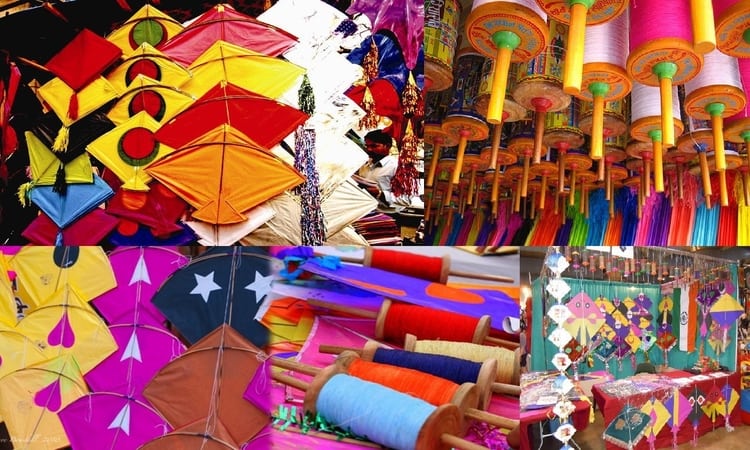 People in North India celebrate this day by the name of Makar Sankranti. One of its distinctive features is kite flying. The sky changes its colour from blue to a colourful one as kite enthusiasts fly zillion of colourful kites. Healthy rivalry to outdo each other in kite flying and capturing as many kites is the real deal of kite fest.
People in North India celebrate this day by the name of Makar Sankranti. One of its distinctive features is kite flying. The sky changes its colour from blue to a colourful one as kite enthusiasts fly zillion of colourful kites. Healthy rivalry to outdo each other in kite flying and capturing as many kites is the real deal of kite fest. - Lohri
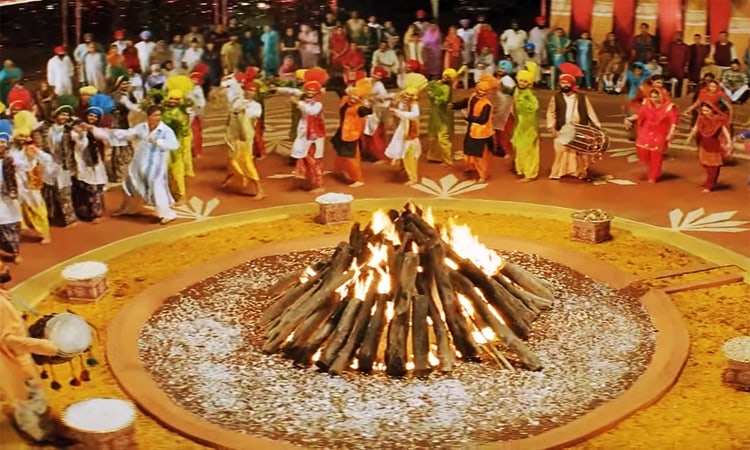 Known as Lohri in Punjab, it is believed to be the coldest day of the year. The day is celebrated by dancing and singing folk songs around the fire and asking for Lohri “loot” in the form of money, sugarcane, rice and sesame seeds.
Known as Lohri in Punjab, it is believed to be the coldest day of the year. The day is celebrated by dancing and singing folk songs around the fire and asking for Lohri “loot” in the form of money, sugarcane, rice and sesame seeds. - Pongal
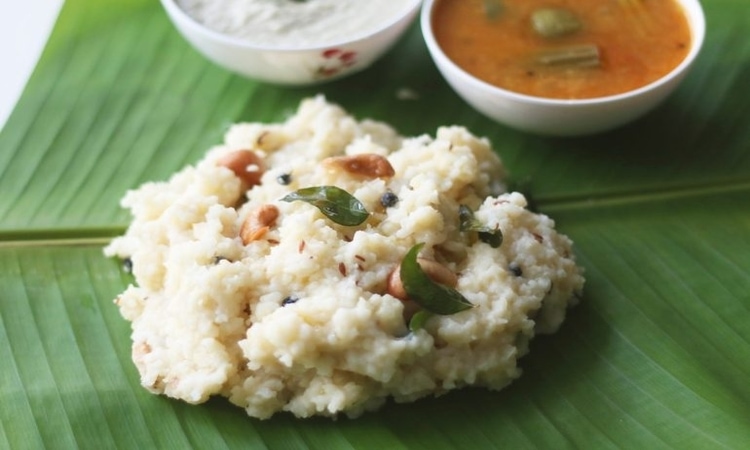 South Indians calls this festival as Pongal that is celebrated for four days. One of the major highlights of Pongal is newly harvested rice which is cooked and is popularly known by the name of Pongal.
South Indians calls this festival as Pongal that is celebrated for four days. One of the major highlights of Pongal is newly harvested rice which is cooked and is popularly known by the name of Pongal. - Bihu
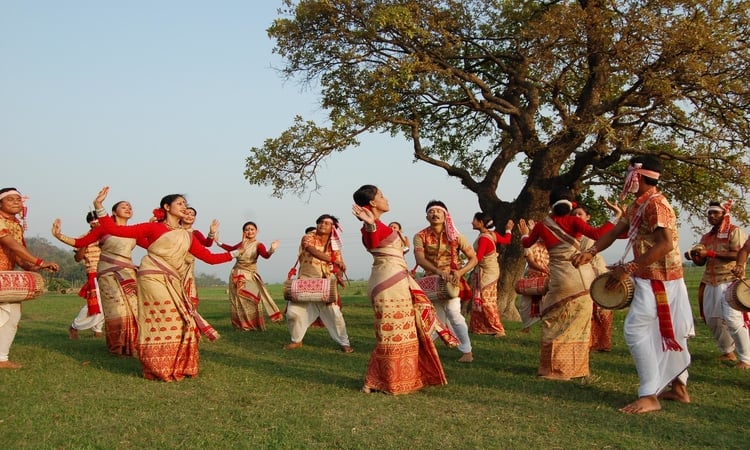 Assamese people celebrate the harvest festival by the name of Bihu in which the variety of sweets are prepared from rice, coconut and til. On this day, after the burning of ‘Mejis’ (made of bamboo, dry leaves and hay), people sit together and celebrate this day by eating traditional Assamese food and chanting hymns.
Assamese people celebrate the harvest festival by the name of Bihu in which the variety of sweets are prepared from rice, coconut and til. On this day, after the burning of ‘Mejis’ (made of bamboo, dry leaves and hay), people sit together and celebrate this day by eating traditional Assamese food and chanting hymns. - Bhogi
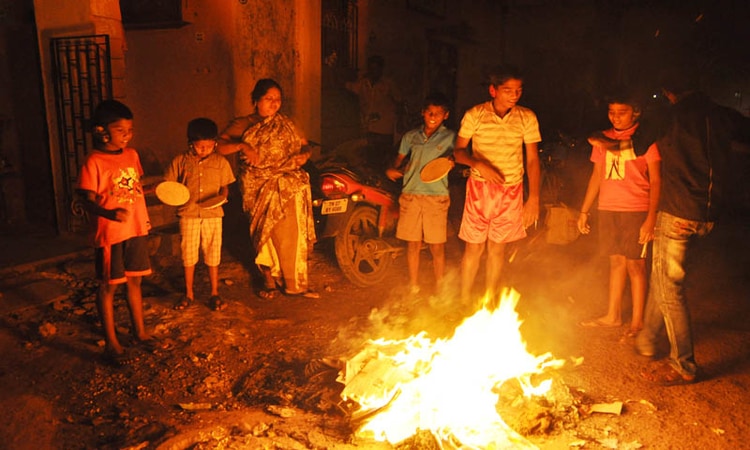 Another name by which Sankrant is celebrated in Tamil Nadu is Bhogi. It is a Thanksgiving celebration in which people express their gratitude to Sun for a whopping harvest. First day is in the honour of Indra (god of rain) that starts with a til (sesame) oil bath and bonfire in the evening. On this day all the unnecessary items at homes are disposed. After that, houses are cleaned, decorated with mango leaves and kolam.
Another name by which Sankrant is celebrated in Tamil Nadu is Bhogi. It is a Thanksgiving celebration in which people express their gratitude to Sun for a whopping harvest. First day is in the honour of Indra (god of rain) that starts with a til (sesame) oil bath and bonfire in the evening. On this day all the unnecessary items at homes are disposed. After that, houses are cleaned, decorated with mango leaves and kolam. - Hadaga Festival
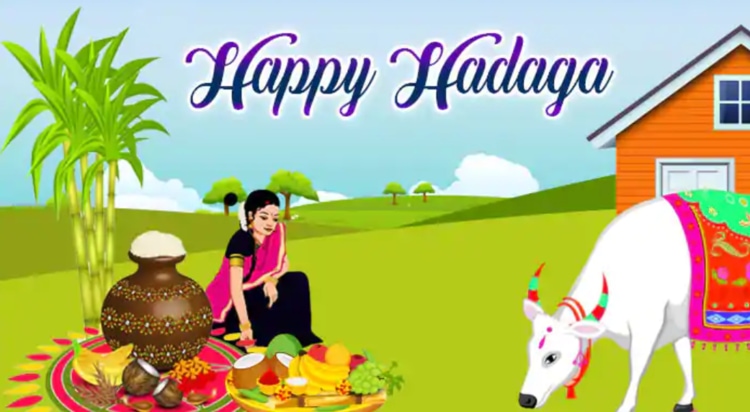 Maharashtrians celebrate this festival by the name of Hadaga in which people pray to god for good monsoon and harvest. To please the god of the rain (Indra), people pray and sing songs. Pictures of the elephant (Indra’s vehicle) are drawn hoping for the rain.
Maharashtrians celebrate this festival by the name of Hadaga in which people pray to god for good monsoon and harvest. To please the god of the rain (Indra), people pray and sing songs. Pictures of the elephant (Indra’s vehicle) are drawn hoping for the rain. - Sacred Bath
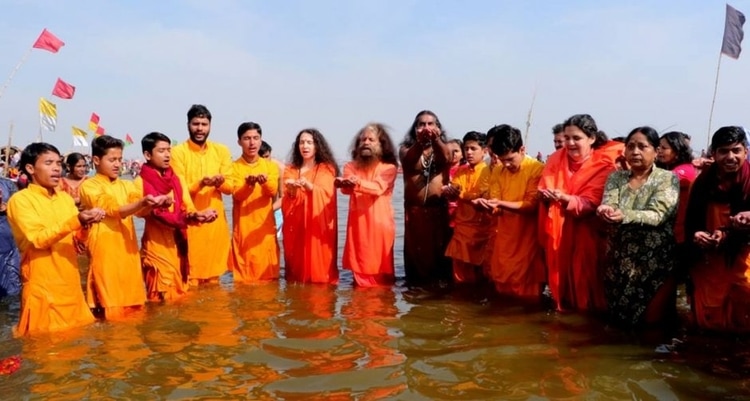 At some places, the day of Makar Sankranti often starts with a holy dip at sacred places like Allahabad, Varanasi, Haridwar, Ujjain, Nashik and Sagar Island. It also signifies that after taking bathe in holy water people get rid of all the misdeeds and negativity.
At some places, the day of Makar Sankranti often starts with a holy dip at sacred places like Allahabad, Varanasi, Haridwar, Ujjain, Nashik and Sagar Island. It also signifies that after taking bathe in holy water people get rid of all the misdeeds and negativity.
===========================================
Makar Sankranti is here, the festival of kites and till chikkis. Unlike the other festivals we are all set to compete in the air with our colorful kites, the shouting from the neighborhood adds the excitement along with the yummy sesame delicacies; and all these happens on the top of your house. With the start of the year the count down of the festival begins with very little know how about why it is being celebrated.
Interestingly very few of us know the core of the festival lies in the celebration of new crop. January is actually a harvesting season of India and celebrated throughout India, popularly know as Makar Sankranti. This festival have got different names from Kanyakumari to Kashmir, and Assam to Gujarat. As it is a harvest festival, comes out of it is bonfire and sesame delicacies and the excitement to cut the crops.
Here is how Makar Sankranti is being celebrated in different part of India.
In Assam,the festival is celebrated as MaghBihu:

Source : blog.onlineprasad.com (bihu)
During the festival period youngsters create makeshift huts from bamboo, leaves and hay known as “Meji”. In that they eat the feast and burn the huts very next morning. Traditional games like TakeliBhonga and buffalo fighting are also the way of celebration. Cakes of rice with various names such as ShungaPitha, TilPithaetc.And some other sweets of coconut called Laru are the delicacies prepared during the festival.Earlier, the festival was a month long celebration throughtout Magh.
In Uttar Pradesh and Bihar the festival is known as Khichdi
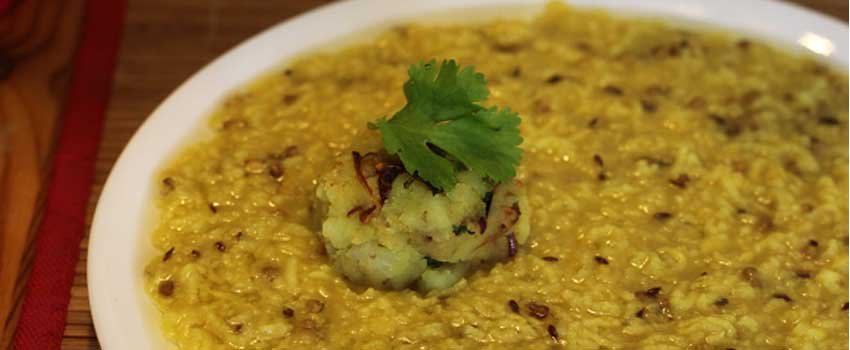
Source : www.foxnews24x7.com
The name”Khichri”derived from the offerings, the celebration on this part of India is done by delightful offerings and exchange of rice and lentil mix khchri.
Makar Sankranti aka Pongal in Andhra Pradesh and Tamil:

Source : www.indiafoodnetwork.in
Day 1 Bhogi: People destroy old clothes and materials, by setting them on fire;the belief says it is the end of old and the emergence of the new.
Day 2 – Thai Pongal:On this day people boils rice with fresh milk, jaggery, brown sugar, cashew nuts and raisins in new pots and allows it to boil over the vessel. Then thanks giving to the Sun (god).People visit each other and exchange greetings.The festival has derived its name from above mention tradition. In Tamil, the root pong or pongu means to “boil over” or “spill over”.
Day 3 – MaattuPongal:Farmers decorate theirbulls with paint, flowers and bells, and feed them sweet rice and sugar cane.
Day 4 – KaanumPongal: Thewordkaanum means “to view” on this day people visit their relatives, friends to thank them and to enjoy the festival.
In Rajasthan, Madhya Pradesh, Maharashtra,Chhattisgarh, Goa, Haryana, Bihar, Jharkhand,Sikkim, and Uttarakhand, the festival is known as MakarSankranti:
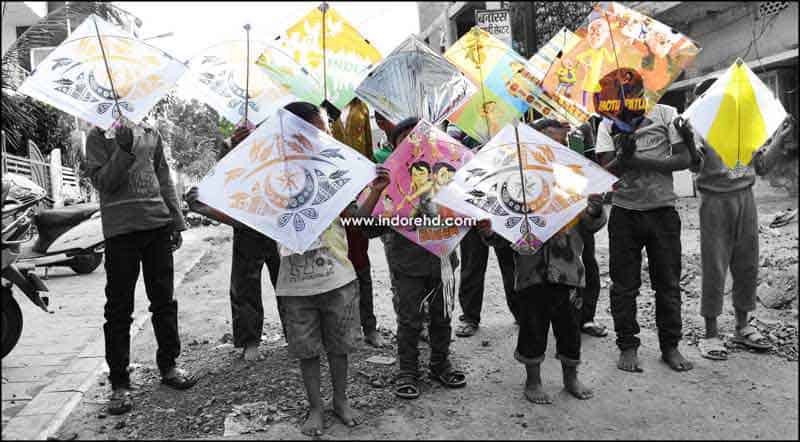
Wondering why it is called makar sankranti?
MakarSankranti can be termed as a symbol of culture and livelihood.“Sankranti” word means “Entering”, and “Makar” is a “Zodiac sign” (Capricorn),on this day the Sun begins to rise in the Makar Rashi.MakarSankranti is the only Hindu festival which occurs on the same date every year.
Inviting married women at home for Haldi- kumkum is the famousritual of Madhya Pradesh. The woman of the house gives them a gift of any new utensil etc.Which she has purchased.
In Maharashtra, they greet people with famous Marathi saying ’tilgulghya, god god bola’, this means have these tilguls and speak sweet.
In Gujarat the festival is known as Uttarayan:
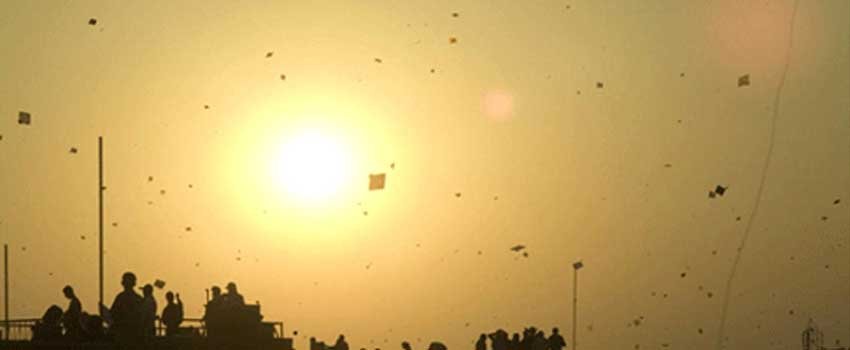
Source: http://4.bp.blogspot.com
Uttarayan the day on which Sun begins its northward journey. We can say that it is a kite festival here predominantly; whole of the sky is filled with the colorful kites. In Ahmedabad an International Kite Festival is organised & Various kite competitions are organised throughout Gujarat. It is said that flying kite is the way of showing respect and worshiping god Sun. On this day “Undhiyu” which is a mixed vegetable dish is prepared in almost every home. Flying Kite in early hours of the day is beneficial for human body. It is believed that the bad bacteria on their bodies would be cleared to a certain extent.
Suggi” festival in Karnataka

Source : www.dineshmaneer.com
On this day the young female wears new clothes and visit friends and exchange plates filled with “Ellu Bella” delicacies.ElluBella “ellu” means white sesame seeds, and “Bella” means jaggery. There is a famous saying in kannada “ellubellathinduollemaathadi” which translates to ‘eat the mixture of sesame seeds and jaggery and speak only good.’
In ORISSA
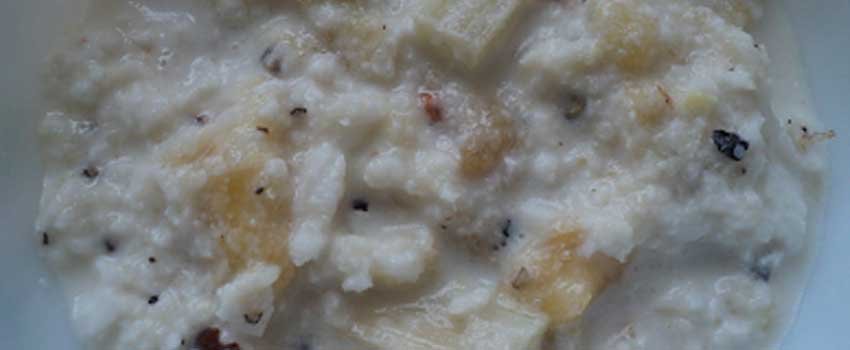
Source : authenticoriyafood-oriyarasoi.blogspot.com
Traditional “Makarchaula” which is a pudding prepared with uncooked newly harvested rice, banana, coconut, jaggery, sesame, rasagola, khoi and chhena for serving as naivedya to god. During this period “MakarMela” is also observed at Dhabaleswar in Cuttack, Hatakeshwar at Atri in Puri, Makar Muni temple in Balasore and near various deities in each district of Orissa. At the temple of Lord Jagannath the festival is observed as “UttarayanaYatra”.
“PoushSankranti” in WEST BENGAL
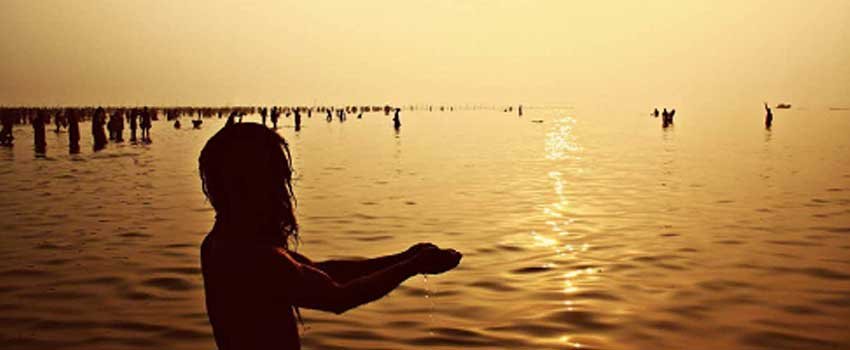
Source : www.ftd.travel
Sankranti is also known as PoushSankranti, named after the Bengali month in which it falls. It is a three day festival, during the period variety of traditional Bengali sweets, are prepared using freshly harvested paddy and date palm syrup in the form of KhejurerGur. The “Gangasagar” religious fair is setup at this point of time; people take a dip and offer water to sun. As it is believed that by taking a dip, your sins will be cleansed and one can attain salvation.
In KERALA, It is known as Makaravilakku
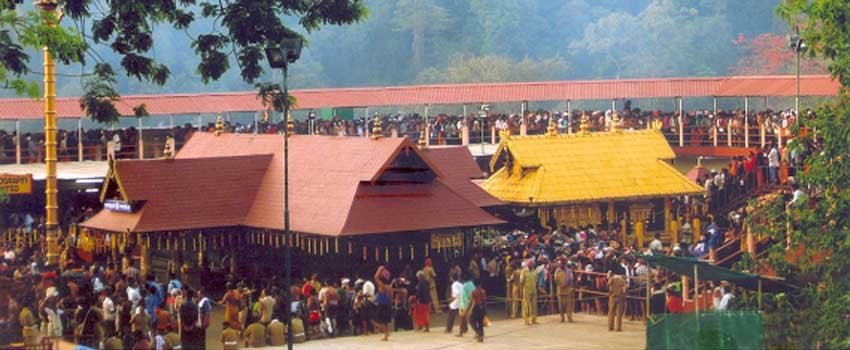
Source : sreesabarisan.blogspot.com
In Kerala Makar Sankranti is celebrated at Sabarimala temple as the Makara Jyothi is visible followed by the Makaravilakku celebrations.SabarimalaSreeAyyappa temple is one of the most ancient temples of the country. Located in the Western Ghat mountain ranges of Pathanamthitta district in Kerala.
In North India, the festival is known as Lohri

Lohri, is although celebrated on 13 January every year, it is also the festival celebrated for expressing happiness of new crop. Bonfires are lit in the evening, in harvested fields or in the front of houses and people in their traditional outfits gather around the rising flames, circle around the bonfire and throw puffed rice, popcorn and other munchies into the fire. It is believed that people throw all their negativity in the fire. Celebration followed by greetings, gifts, Prasad and Bhangra. On very next day Maghi has been celebrated with taking a dip in river in early hours of day.











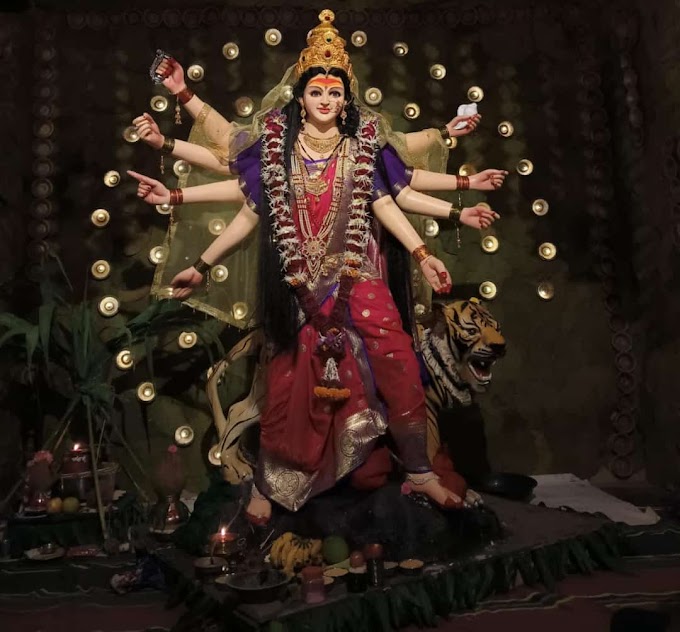

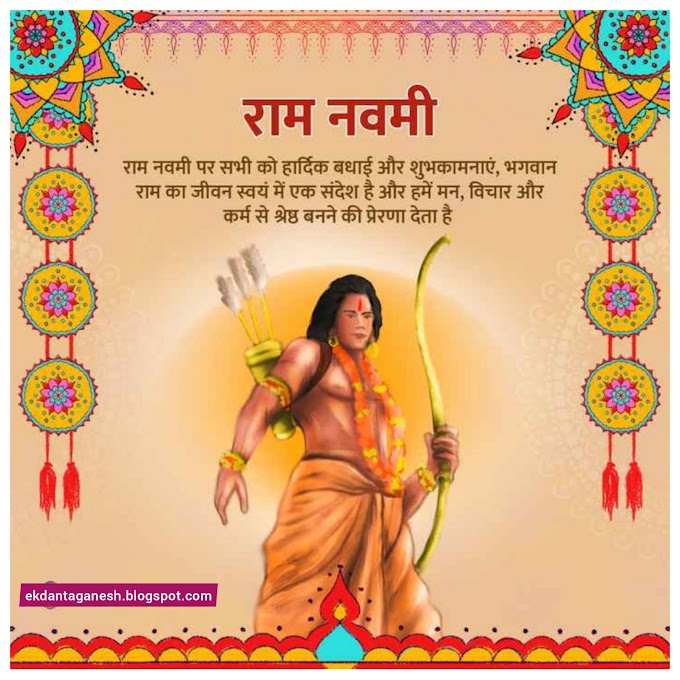


Wonderful blog! The festival Makar Sankranthi is a harvest festival for Hindus and is quite popular in Maharashtra, Karnataka. Here are some innovative Makar Sankranti celebration ideas to add fun to your celebrations.
ReplyDelete